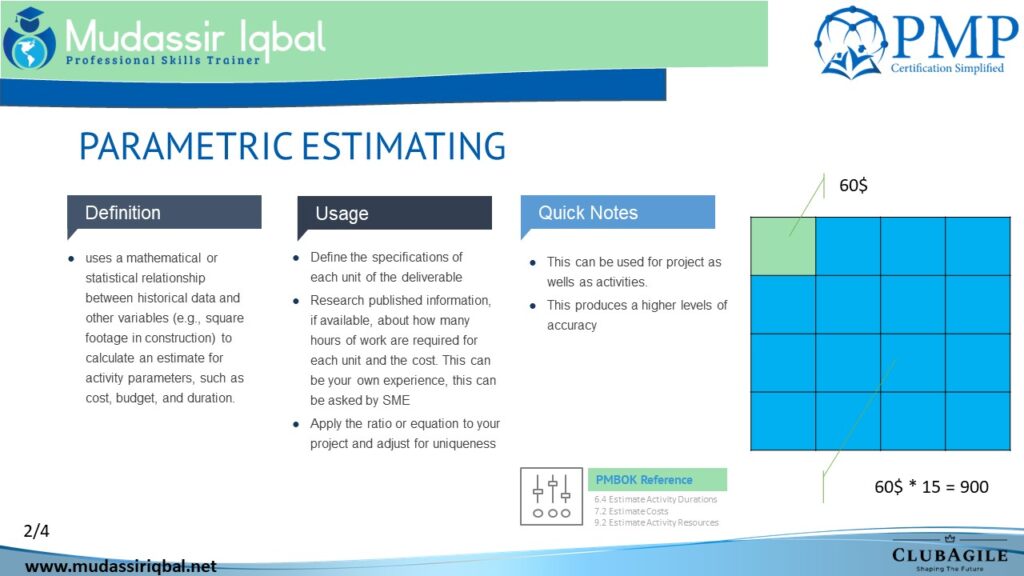Parametric estimation is a project management technique that uses statistical data and mathematical models to estimate the cost and duration of a project. It is based on the idea that many project characteristics can be described and predicted using statistical data and that a mathematical model can be used to estimate the cost and duration of a project based on this data.
Parametric estimation is useful in situations where there is a high degree of certainty and a large amount of historical data available. It is often used in industries such as construction, manufacturing, and engineering, where projects are repetitive and have well-defined characteristics.

Example of Parametric Estimation
An example of parametric estimation would be a construction company that needs to estimate the cost of building a new bridge. The company would use data from similar bridges that have been built in the past, and use a mathematical model to estimate the cost of the new bridge based on factors such as the length of the bridge, the type of materials used, and the number of lanes.

However, parametric estimation also has its limitations as it heavily depends on the availability and quality of data, and it may not be suitable for projects that are unique or have high degree of uncertainty. Therefore, it’s always recommended to use multiple estimation techniques in combination to get the most accurate estimate possible.
Parametric estimation is widely used in various fields of research and applications, including economics, finance, engineering, biology, and social sciences. It provides a structured framework for estimating unknown parameters, making statistical inferences, and modeling data based on specific assumptions about the underlying distribution or model.

